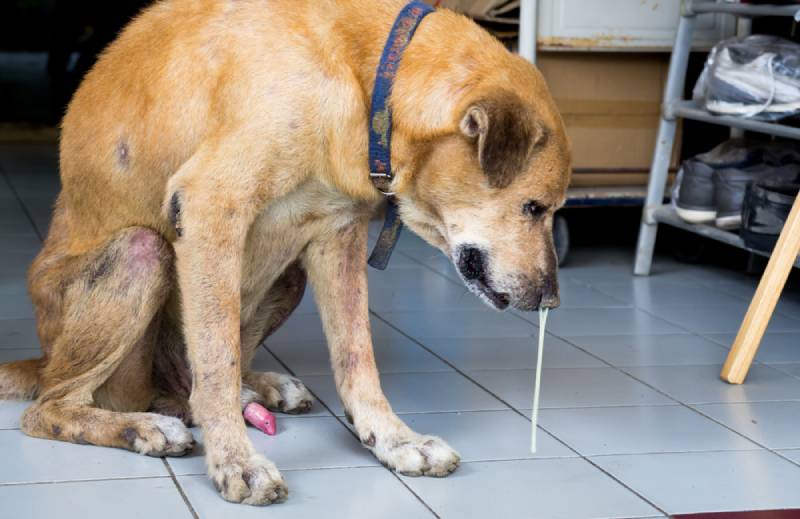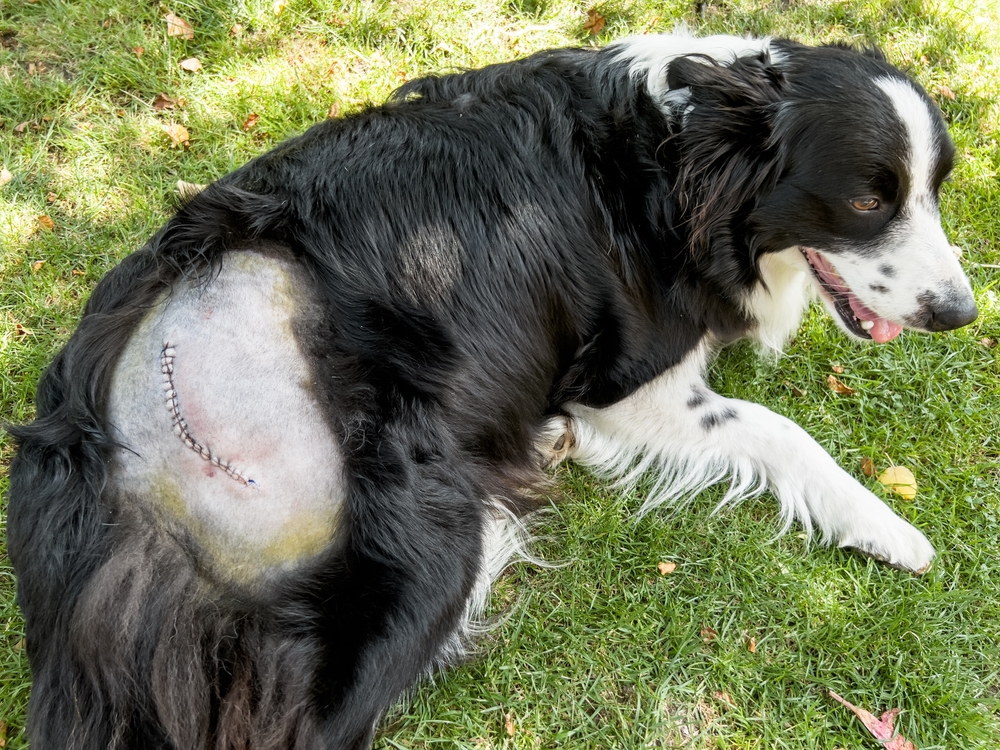Rhinitis and sinusitis are medical conditions that mean inflammation of the nose (rhinitis) and inflammation of the sinuses (sinusitis). Rhinosinusitis, then, is if both rhinitis and sinusitis occur together at the same time.
In dogs, there are various causes of these medical conditions, and in this article, we’ll discuss these as well as potential signs to look out for and some prospective treatment options. So, let’s get started!
What are Rhinitis and Sinusitis?
A dog’s nose is a particularly amazing organ; canines can detect smells 10,000–100,000 times better than us humans! While the olfactory system and nasal cavity in a dog can be quite complex, for the sake of this article, we’ll briefly talk about some relevant anatomy to help you visualize where the areas of rhinitis and sinusitis can occur.
Nasal Anatomy of Dogs
A dog’s nose and nasal cavity are the face’s hallways of the respiratory system that continue to deliver air further along into the respiratory tract. We start with their hairless nasal planum (the tip or part of the nose you see) with their two nostrils (holed openings in the nose also called nares). In between the two nares is a wall called the septum which separates the two symmetrical halves of the nasal cavity into identical left and right sides.
As you go past the nares and into the nasal cavity, thin turbinate bones called the nasal conchae are present; they resemble scrolls and can vary in length depending on each dog’s individual nose length. These areas allow for nasal cells to attach to as well as a large surface area for air to pass through. These voided passageways of space in between conchae are called meatuses.
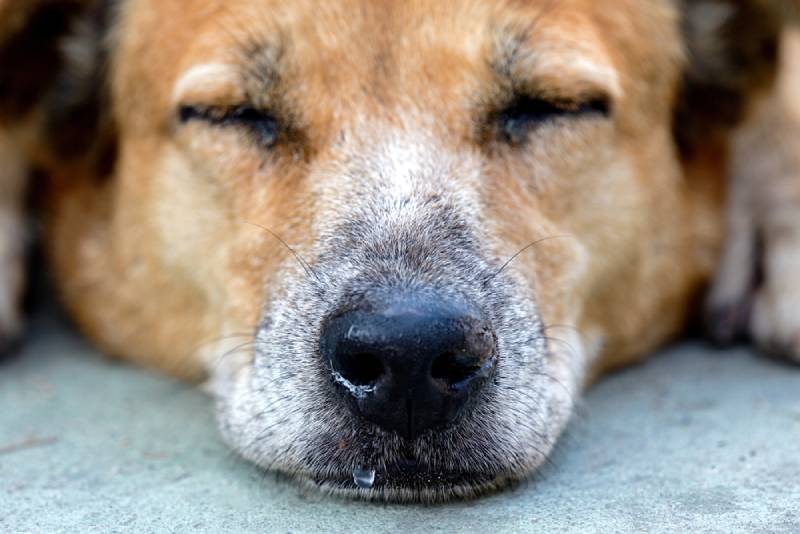
Next, the sinuses, which consist of three frontal sinuses and a maxillary recess, are cavities around the nose passageways. They are an extension of the nasal cavity itself and all communicate with the nasal cavity. These sinuses can fill pockets of air in between the skull bones.
Any illness affecting one or both of these areas can be acute (come on suddenly) or chronic (occur over a longer period of time). It is important to note that when there is inflammation and irritation in these areas, specific cells can release secretions. This discharge, depending on the cause, severity, and length of time present, can change in composition over time. It may start as serous (water-like) in nature and then become more mucoid (slimy-like).
Further along, it could also become bloody or mucus combined with pus (mucopurulent), etc. There can also be potential damage to the nasal turbinates and destruction of the blood vessels in the area.
What Are the Signs of Rhinitis and Sinusitis?
Signs that can be seen will vary not only due to the cause but also whether it is an acute or chronic issue. Things to be on the lookout for that could occur include:
- Repeated or frequent sneezing
- Nasal discharge
- Bleeding from the nose (epistaxis)
- Pawing at the face/nose
- Eye discharge
- Open-mouth breathing
- Difficulty taking a breath in
- Snoring
- Reverse sneeze
- Swelling of the face
- Ulceration on the nose
- Facial pain
- Head shyness
- Fever
- Lethargy
- Weakness
- Not wanting to eat or drink
If your dog is showing any of these signs, we recommend speaking with a vet.

If you need to speak with a vet but can’t get to one, head over to PangoVet. It’s an online service where you can talk to a vet online and get the personalized advice you need for your pet — all at an affordable price!
What Are the Causes of Rhinitis or Sinusitis?
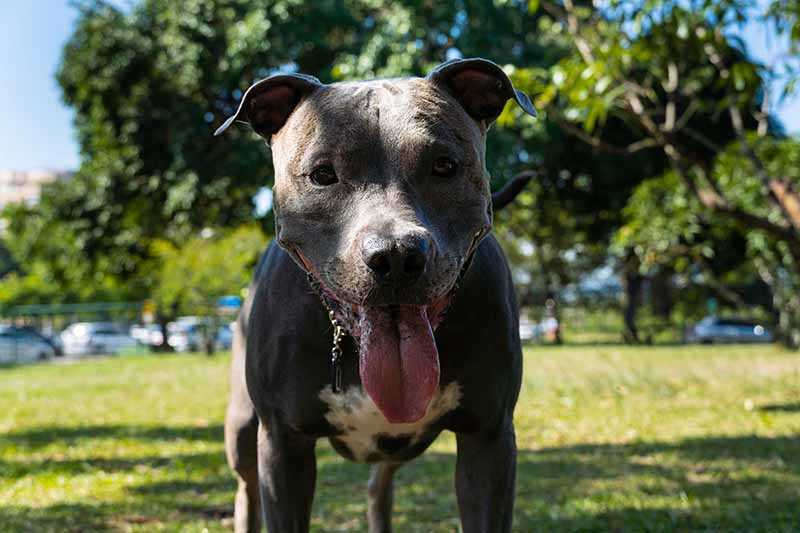
There are many different causes of inflammation in the nasal cavity, sinuses, or both.
- Viral infections can be a cause, including distemper, adenovirus types 1 and 2, herpesvirus, and parainfluenza.
- Most of the time, bacterial causes of rhinitis or sinusitis are secondary in nature. But one example of a bacteria being the primary cause of an infection in the area is the bacteria, Bordetella bronchiseptica, which causes kennel cough. While rarer, parasites such as Cuterebra can also be included in the mix. A rickettsial (small group of bacteria) disease can also be caused by salmon poisoning, which is when dogs eat raw or undercooked types of specific fish, including salmon, that are infected with parasitic flatworms.
- Another potential cause is allergies. Just like in people, dogs can suffer from allergic rhinitis and sinusitis to things such as seasonal pollens, house dust and molds, etc. Smoke aspiration and inhaling irritating gasses or aerosol deodorizers and perfumes, could also be potential causes.
- Fungal disease, such as Aspergillosis, can also bring about rhinitis or sinusitis. An additional cause could include foreign bodies. One example of a foreign body includes grass awns (also referred to as foxtails) which is plant material with spikes that can easily get stuck or burrow into the area.
- Given that the mouth and teeth are so close in proximity, dental diseases such as a tooth root abscess or an oronasal fistula could also be the source of the disease.
- Trauma, such as that from a bite wound or being hit by a car, may also bring about inflammation in the nose and sinus areas.
- Another rare cause is Lymphoplasmacytic rhinitis, also known as idiopathic chronic inflammatory disease. Because idiopathic means due to an unknown cause, in these cases it is not possible to identify the exact cause.
- Congenital causes such as cleft palate or primary ciliary dyskinesia. Primary Ciliary Dyskinesia is a genetic disease that decreases the clearance by cilia (hair-like structures) that allow for movement in various areas, including that in the nasal and respiratory tract, which allows for a build-up of discharge.
How Do I Care for a Dog with Rhinitis or Sinusitis?
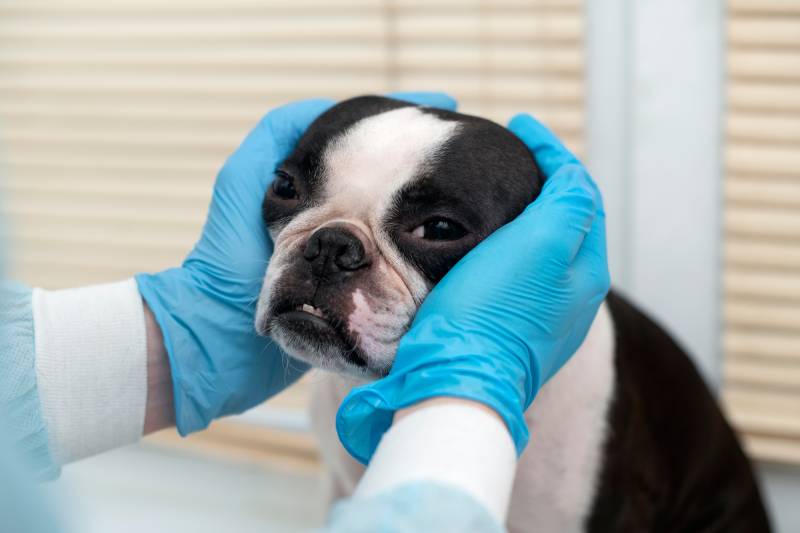
At the veterinary practice, a complete history and physical exam will start the process. Depending on what’s found from the history and physical exam, several tests may be recommended; these could commonly include bloodwork to evaluate for systemic changes, or imaging such as X-ray, which at times may be limited. Advanced imaging, especially CT (computed tomography) and/or MRI (magnetic resonance imaging) can be very helpful. Nasal cytology and biopsy, culture samples, or fungal serology may also be a part of the plan.
Rhinoscopy, a small, flexible scope that can go into the nasal cavities to look for problems or collect potential samples and/or foreign objects, may be helpful in certain cases.
Treatment will be best tailored to the specific cause of the disease. Sometimes in mild cases or suspected viral cases, supportive care may be all that is needed. This could include fluid therapy, assisted feeding, or using an e-collar to prevent self-mutilation if needed. When antibiotics are used to treat secondary bacterial infections, these may last for several weeks.
For other specific causes, a nasal foreign body may be removed with rhinoscopy while a fungal disease would be treated with antifungal medication. Sometimes, steroids or other medication to manage inflammation or allergies may be needed. Dental disease may require the affected tooth to be removed surgically along with antibiotics and pain medication.
In more severe cases that are not getting better with treatment, surgical exploration of the area may be needed to visualize and remove infected tissue, flush out the sinuses, or allow for proper drainage. For those with cancer in the affected area, radiation therapy and surgery may be the best treatment option.
Frequently Asked Questions (FAQ)
Is there anything I can do to prevent my dog from getting rhinitis and sinusitis?
For some causes of these conditions, the answer is yes! For example, fully and properly vaccinating your dog against all possible respiratory viruses is an important preventative measure. Having proper and routine dental examination and care can help prevent dental disease that can also sidestep causing further disease down the line.
In addition, not allowing your dog to eat raw or undercooked types of fish and avoiding/quickly removing foxtails if present could prevent further problems. Unfortunately, not every cause can be prevented; for example, the cases that are due to cancer or those with previously unknown genetic diseases.
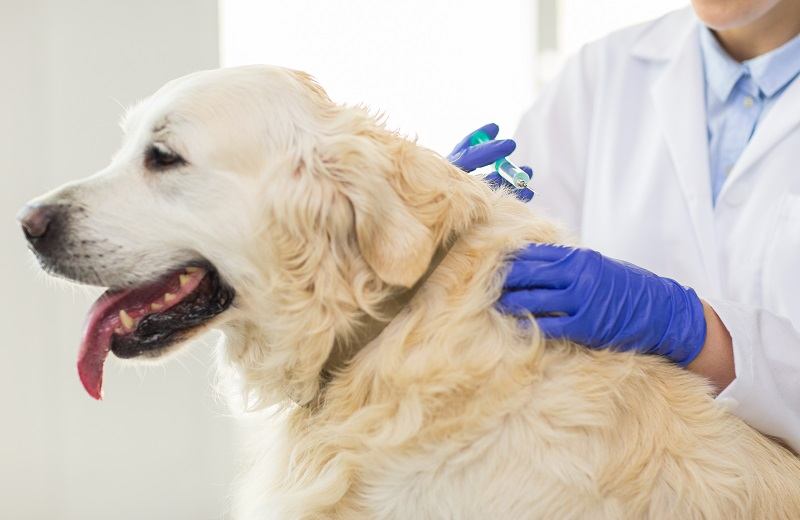
What is my dog’s overall prognosis?
Overall, the affected pet’s prognosis will be determined by the cause of the illness, the severity, any other underlying medical conditions, as well as the response to treatment, which all can be variable for each affected dog. With that being said, in general, the types of causes with a good prognosis tend to be bacterial infections, respiratory viruses, trauma, foreign bodies, and hypersensitivity.
A more guarded prognosis is seen in fungal infections or chronic cases of disease (over a long period of time) and a poorer prognosis is noted in those with cancer of the area.
Conclusion
Rhinitis, sinusitis, or rhinosinusitis can all come about due to a myriad of causes. Once signs affecting the nose or surrounding areas develop, it’s important to take them seriously as in many cases, a prompt diagnosis and treatment protocol will only be an advantage for both your dog and you.
Featured Image Credit: PattyPhoto, Shutterstock

